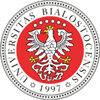Proszę używać tego identyfikatora do cytowań lub wstaw link do tej pozycji:
http://hdl.handle.net/11320/18983Pełny rekord metadanych
| Pole DC | Wartość | Język |
|---|---|---|
| dc.contributor.author | Cholewa, Justyna | - |
| dc.date.accessioned | 2025-10-08T11:18:06Z | - |
| dc.date.available | 2025-10-08T11:18:06Z | - |
| dc.date.issued | 2025 | - |
| dc.identifier.citation | Linguodidactica, T. 29, 2025, s. 85-96 | pl |
| dc.identifier.uri | http://hdl.handle.net/11320/18983 | - |
| dc.description.abstract | Uczący się języka obcego napotykają w określonych sytuacjach komunikacyjnych trudności komunikacyjne, które wynikają z różnorodnych źródeł. W takich momentach mogą oni starać się unikać problemu komunikacyjnego poprzez np. zaniechanie kontynuacji wypowiedzi lub podtrzymać interakcję poprzez stosowanie alternatywnych planów. Zarówno pierwszy, jak i drugi sposób jest przejawem tzw. strategii komunikacji. Pojęcie strategii komunikacji rozwijało się w opozycji do pojęcia strategii uczenia się. Dokonanie podziału między strategiami uczenia się a strategiami komunikacji nie jest proste, o czym świadczą liczne ich klasyfikacje. W literaturze przedmiotu dają się wyróżnić dwa stanowiska w kwestii rozdziału obu typów strategii. Jedni badacze rozgraniczają strategie komunikacji od strategii uczenia się, a inni nie dokonują takiego podziału. Celem artykułu jest analiza obu stanowisk, podjęta w celu określenia istoty strategii komunikacji. | pl |
| dc.description.abstract | Foreign language learners encounter communicative difficulties in certain communication settings for a variety of reasons. In such problematic situations they may solve the communication obstacles by, for example, abandoning the communication and not continuing to speak, or they may sustain the interaction by using alternative strategies. Both the first and second methods are manifestations of what is known as communication strategy. The concept of communication strategies developed in opposition to the concept of learning strategies. The distinction between learning strategies and communication strategies is not straightforward, as evidenced by their numerous classifications. In the literature, two attitudes can be distinguished regarding the separation of the two types of strategies. Some researchers distinguish between communication strategies and learning strategies, while others make no distinction. The purpose of this article is to analyze both attitudes, with the aim of defining the essence of communication strategies. | pl |
| dc.language.iso | pl | pl |
| dc.publisher | Wydawnictwo Uniwersytetu w Białymstoku | pl |
| dc.rights | CC BY-SA 4.0 Uznanie autorstwa – Na tych samych warunkach | pl |
| dc.rights.uri | https://creativecommons.org/licenses/by-sa/4.0/deed.pl | pl |
| dc.subject | strategie komunikacji | pl |
| dc.subject | strategie uczenia się | pl |
| dc.subject | uczenie się języka drugiego | pl |
| dc.subject | komunikacja | pl |
| dc.subject | trudności komunikacyjne | pl |
| dc.subject | communication strategies | pl |
| dc.subject | learning strategies | pl |
| dc.subject | second language learning | pl |
| dc.subject | communication | pl |
| dc.subject | communicative difficulties | pl |
| dc.title | Strategie komunikacji a strategie uczenia się – studium porównawcze | pl |
| dc.title.alternative | Communication strategies versus learning strategies – a comparative study | pl |
| dc.type | Article | pl |
| dc.rights.holder | CC BY-SA 4.0 Uznanie autorstwa – Na tych samych warunkach | pl |
| dc.identifier.doi | 10.15290/lingdid.2025.29.06 | - |
| dc.description.Email | jchole@sgh.waw.pl | pl |
| dc.description.Affiliation | Szkoła Główna Handlowa w Warszawie | pl |
| dc.description.references | Bialystok E., Some factors in the selection and implementation of communication strategies, [w:] Strategies in Interlanguage Communication, C. Faerch, G. Kasper (red.), London–New York 1983, s. 100–118. | pl |
| dc.description.references | Corder S.P., Strategies of communication, [w:] Strategies in Interlanguage Communication, C. Faerch, G. Kasper (red.), London–New York 1983, s. 15–19. | pl |
| dc.description.references | Czerniawska E., Ja i moja pamięć. O użytecznych strategiach uczenia się, Warszawa 1994. | pl |
| dc.description.references | Dörnyei Z., Kormos J., Problem-solving mechanism in L2 communication. A Psycholinguistic Perspective, „SSLA” 1998, 20, s. 349–385. | pl |
| dc.description.references | Dörnyei Z., Scott M.L., Review Article. Communication Strategies in a Second Language: Definitions and Taxonomies, „Language Learning” 1997, 47/1, s. 173–210. | pl |
| dc.description.references | Droździał-Szelest K., Strategie uczenia się języka obcego: badania a rzeczywistość edukacyjna, [w:] Autonomia w nauce języka obcego, M. Pawlak (red.), Poznań–Kalisz 2004, s. 31–43. | pl |
| dc.description.references | Faerch C., Kasper G., Plans and strategies in foreign language communication, [w:] Strategies in Interlanguage Communication, C. Faerch, G.Kasper (red.), London–New York 1983, s. 20–60. | pl |
| dc.description.references | Kasper G., Kommunikationsstrategien in der interimsprachlichen Produktion, „Die Neueren Sprachen” 1982, 81/6, s. 578–600. | pl |
| dc.description.references | Knapp-Potthoff A., Knapp K., Fremdsprachenlernen- und lehren, Stuttgart 1982. | pl |
| dc.description.references | Naiman N., Fröhlich M., Stern H.H., Todesco A., The good language learner. A report. Research in Education Series 7, Toronto 1978. | pl |
| dc.description.references | O’Malley J.M., Chamot A.U., Learning strategies in second language acquisition, Cambridge 1990. | pl |
| dc.description.references | Oxford R.L., Language Learning Strategies, Boston 1990. | pl |
| dc.description.references | Oxford R.L., Lavine R.Z., Amerstorfer C.M., Understanding Language Learning Strategies in Context: An Innovative, Complexity-Based Approach, [w:] Language Learning Strategies and Individual Learner Characteristics. Situating Strategy Use in Diverse Contexts, R.L. Oxford, C.M. Amerstorfer (red.), London–New York–Oxford–New Delhi–Sydney 2019, s. 5–29. | pl |
| dc.description.references | Pawlak M., Contextual and Individual Difference Variables. Pronunciation Learning Strategies in Form-Focused and Meaning-Focused Activities, [w:] Language Learning Strategies and Individual Learner Characteristics. Situating Strategy Use in Diverse Contexts, R.L. Ox ford, C.M. Amerstorfer (red.), London–New York–Oxford–New Delhi–Sydney 2019, s. 189–207. | pl |
| dc.description.references | Pawlak M., Strategie komunikacyjne w nauce języka obcego – próba integracji perspektyw, „Konińskie Studia Językowe” 2014, 2 (1), s. 11–33. | pl |
| dc.description.references | Rubin J., What the “Good Language Learner” Can Teach Us, „TESOL Quarterly” 1975, 9/1, s. 41–51. | pl |
| dc.description.references | Rubin J., Learner Strategies: Theoretical Assumptions, Research, History and Typology, [w:] Learner Strategies in Language Learning, A. Wenden, J.Rubin (red.), Cambridge 1987, s. 15–30. | pl |
| dc.description.references | Selinker L., Interlanguage, „International Review of Applied Linguistics in Language Teaching” 1972, 10, s. 209–230. | pl |
| dc.description.references | Smith B., The Use of Communication Strategies in Computer-Mediated Communication, „System” 2003, 31, s. 29–53. | pl |
| dc.description.references | Stern H.H., What Can We Learn from the Good Language Learner, „The Canadian Modern Language Review” 1975, 31/4, s. 304–319. | pl |
| dc.description.references | Tarone E., Communication strategies, foreigner talk and repair in interlanguage, „Language Learning” 1980, 30/2, s. 417–429. | pl |
| dc.description.references | Tarone E., Some thoughts on the notion of “communication strategy”, [w:] Strategies in Interlanguage Communication, C. Faerch, G. Kasper (red.), London–New York 1983, s. 61–74. | pl |
| dc.description.references | Váradi T., Strategies of target language learner communication: message adjustment, [w:] Strategies in Interlanguage Communication, C. Faerch, G. Kasper (red.), London–New York 1983, s. 79–99. | pl |
| dc.identifier.eissn | 2957-0204 | - |
| dc.description.volume | 29 | pl |
| dc.description.firstpage | 85 | pl |
| dc.description.lastpage | 96 | pl |
| dc.identifier.citation2 | Linguodidactica | pl |
| dc.identifier.orcid | 0000-0002-0256-5078 | - |
| Występuje w kolekcji(ach): | Linguodidactica, 2025, tom XXIX | |
Pliki w tej pozycji:
| Plik | Opis | Rozmiar | Format | |
|---|---|---|---|---|
| Linguodidactica_29_2025_J_Cholewa_Strategie_komunikacji_a_strategie_uczenia_sie.pdf | 156,53 kB | Adobe PDF | Otwórz |
Pozycja ta dostępna jest na podstawie licencji Licencja Creative Commons CCL


